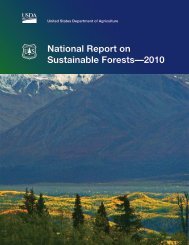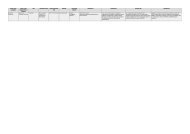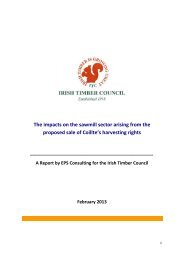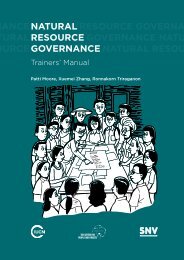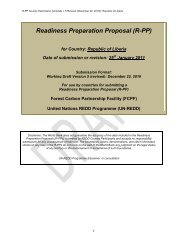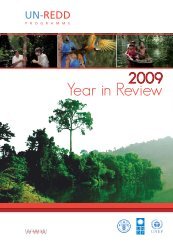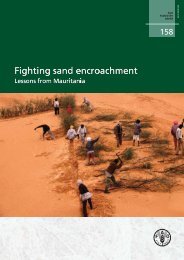pdf 1242 KByte - JIKO
pdf 1242 KByte - JIKO
pdf 1242 KByte - JIKO
Create successful ePaper yourself
Turn your PDF publications into a flip-book with our unique Google optimized e-Paper software.
Policy Paper: Assessing prerequisites for market-based REDD+ activities 4<br />
performance would not necessarily be monitored but only measured with proxy indicators. Following these<br />
two steps that are intended make countries ready for REDD+, a performance-based instrument would be<br />
introduced in the third phase with financing being dependent on quantified forest emissions and removals<br />
against an agreed reference level. In this phase, financing could either come from the global compliance<br />
markets or a large international fund as in the previous phase (Angelsen et al. 2009). With the Cancun<br />
Agreements, the phased approach was officially introduced at UNFCCC-level and an international framework<br />
for REDD+ was established.<br />
With the phased approach being officially adopted, the question which criteria developing countries should<br />
fulfil to participate in the individual phases becomes crucial. This is particularly relevant in the event of an<br />
integration of REDD+ into the carbon markets which is one possible financing option in phase 3.<br />
Against this background, this policy paper identifies and discusses different readiness elements for a marketbased<br />
REDD+ mechanism. First, the main readiness elements are identified through an extensive literature<br />
review accompanied by first experiences from ongoing REDD+ readiness initiatives such as the World Bank<br />
Forest Carbon Partnership Facility (FCPF) and the United Nations collaborative programme on REDD (UN-<br />
REDD). In a second step, the authors look at the implications these readiness elements may have on the legitimacy,<br />
effectiveness, efficiency and equity of the REDD+ activities. Subsequently, the paper analyses<br />
selected emission trading schemes regarding their role as potential markets for REDD+ credits and assesses<br />
how the readiness elements identified are being addressed. Finally, the authors draw conclusions on the implications<br />
of their findings for the future inclusion of REDD+ into the carbon markets.<br />
Nicolas Kreibich, Christof Arens and Wolfgang Sterk<br />
Wuppertal Institute




